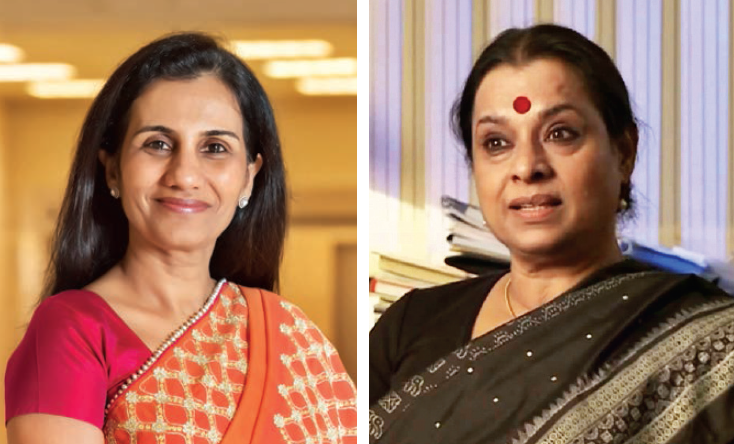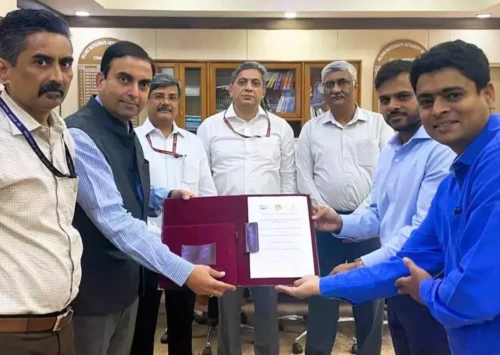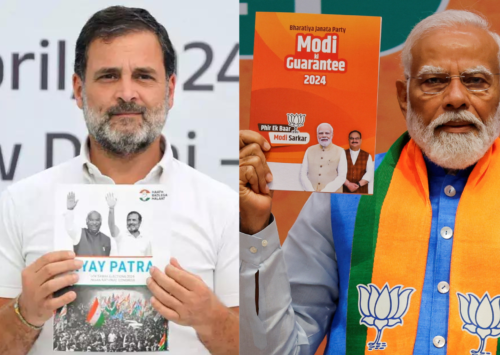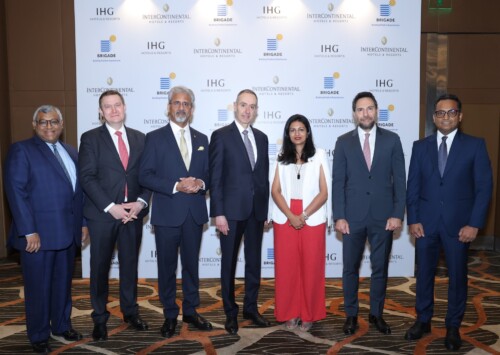Women Workforce
Biz@India
May 2016
There are several problems that prevent Indian women from entering the workforce. Despite realising that the effective presence of women could significantly boost India’s domestic productivity, there is little that has changed over the decades. We take a look at the facts and the reasons behind the disparity.
Afew days ago, a heartfelt letter by one of India’s top bank executives made headlines after it went viral on social media. The letter delved into the intricacies of a working mother and the personal struggles she had to overcome after her father passed away at the tender age of 13. The letter also shed light on her journey from the ordinary to one of the biggest names in the corporate world. She not only offers life lessons but pens down how she learnt from her own mother who took up the challenge to raise three children all by herself and was, in fact, a homemaker till the sudden demise of her husband. The letter was addressed to her daughter and the individual having penned it, was none other than Chanda Kochhar, one of the foremost names in corporate India who heads ICICI Bank that is amongst the top private banks in India.
Success stories of women excelling as professionals are inspirational, no doubt. However, the popularity of such women also emphasises the paradox that India has been reeling under for decades. Stories like those of Chanda are, after all, far and few and it is here where lies India’s dichotomy. On one hand, we praise our gods in the form of women and on the other, we fail to provide them equality in everyday life.
Where women stand?
Employment opportunities, though not commensurate to the growing young population, have grown in specific sectors in the past few years. However, a look at some quick facts reveals that the situation of women in terms of their standing in the employment market has not fared as well, as their male counterparts. Less than a third of working-age women in India have jobs and many women work in low productivity jobs often without social benefits and disparity in wages between men and women that diminishes the incentive for women.
This, though grave, is only part of the problem for India that aspires to be an economic powerhouse in the coming decades.

Chanda Kochar (left), MD and CEO at ICICI Bank, and Dr Ranjana Kumari (right), Director of Delhi-based Centre for Social Research are among a few powerful women in India
A study by McKinsey Global Institute, the financial research arm of the international consulting company –McKinsey & Company, found that Indian women contribute only 17 pc, the least to the country’s GDP (Gross Domestic Product) as compared to the contribution of women in other regions of the world. The global average of women’s contribution to the GDP stands at 37 pc. Even the most backward regions of the world – sub-Saharan Africa – clock in 39 pc in terms of what their women contribute to their country’s GDP. India’s women comprise only a quarter of the work force, as against a global average of 40 pc.
The problem, of course, is grave for India and getting to its root requires ignoring the glitz and glamour of films and television advertisements – not that women are treated equally there – and getting to the basics of the employment market, that is, the labour force.
Labour market and the gender gap
The past decade has seen a considerable decline in the participation of Indian women in the labour market. According to figures of the International Labour Organisation (ILO), women participation in India’s labour market registered a decline from 35 pc in 2005 to around 30 pc in 2012.
Much of this decline can also be attributed to people (read men) moving away from agriculture. “Due to the crisis in agrarian sector, men are moving out now and women are entering because of these circumstances. This can be seen in states like Bihar, Jharkhand, Chattisgarh etc.,” says Amarjeet Kaur, secretary of the All India Trade Union Congress (AITUC).
“Some years ago, road construction of the Golden Quadrilateral (a highway network connecting many of the major industrial, agricultural and cultural centres of India) was undertaken and women found employment. However, now with mechanisation, they are not hired any more. Their work has been taken over by men who will handle big machines. Now women are employed for watering etc.,” observes Kaur, adding that the government needs to take some conscious measures to train them in different sectors.
Rising income of families in the lower rung also have an adverse impact on women joining the workforce. Experts observe how a reasonably well off family would prefer a woman to carry out household chores than work outside. It is a social phenomenon that has existed in India for ages. This has restricted women from entering the workforce as well as contributing to the family income.
“For every three people retiring, only one is taken on a regular job while two are taken on hired or contract basis. This is happening with the existing labour force in the formal sector; especially in the government sector. Regular employment is being replaced by contracts. So, when recruitment is not happening the participation of banks is also less,” Kaur explains.
Absence of pay parity also acts as a major disincentive for women in the working age to join the workforce. Wage differentials between men and women especially in unskilled jobs forms a major basis for women facing discrimination. As a result, women tend to contribute more to household work as jobs outside don’t really fetch them much. As incomes grow, cultural behaviour often forbids women from going out to work due to the low wages they end up receiving. Add to that the absence of social benefits, and the scenario becomes as discouraging as it can.
No wonder then that the gender gap in India’s labour force is 23-24 pc, the highest in any other sector.
Opportunities and challenges
Gender equality plays an extremely vital role in the economic development of any nation, more so for a developing nation like India. Several international agencies estimate that India could stand to gain significantly if women were allowed to enter the workforce to its full potential. For example, the McKinsey study cited above states that India could increase its 2025 GDP, estimated at EUR 4.3 trillion, by16-60 pc simply by enabling women to participate in the economy on par with men, resulting in a possible addition of EUR 2.6 trillion to the country’s GDP.
International Monetary Fund (IMF) managing director Christine Lagarde recently said that India’s GDP would expand by 27 pc if its women participated in the workforce at the same rate as men. The calculations, though based on best case scenarios, do offer a glimpse into the dividend India’s economy can reap.
However, parity in terms of participation is not only absent in the labour market but extends to all forms of jobs. There are very few top ranking women employees in the corporate sector. “When we look at the number of women in business leadership, it is pathetically low. There are only 2.7 pc of women in chair in the entire country. Majority of them are family members,” Dr Ranjana Kumari, director of Delhi-based Centre for Social Research (CSR), points out.
Ranjana says the anomaly lies in the absence of a pipeline. The disheartened women activist points to the meager 3.5 pc entering the work force as a major problem, with majority in the informal sector. “India is projected to add 424 million working adults over 40 years. And 3.5 pc of that means, only a few women are entering the workforce,” she says. Pointing to the absence of accurate data she refuses to believe the projections of the international agencies. “We hope that 68 million women workers will be added to the workforce provided we grow at 16 pc. It is a strange calculation,” she quips.
Stories like that of Chanda Kochhar are far and few. Though inspiring, they only tell part of the tale. “It (success stories) is happening only in banking sector. In other sectors, the government itself is a role model in promoting wrong policies by having contract teachers, guest teachers, doctors, nurses, cleaning staff, outsourcing security, mess staff and gardeners,” says Kaur of AITUC.
Ground realities hardly measure up to the usual political rhetoric on women empowerment. Kaur too rues the absence of data to evaluate the situation of women and also lays the blame on the government for their opaqueness. “There is no data on what the central and state governments, private education institutions, health, telecom services, public sector undertakings are doing in terms of employing women. Banks have it because they have unions. On an average, 15 pc of employees in banks are women. It is the best scenario,” she adds.
Getting over the stigma
The social stigma that surrounds the entry of women into certain professions is also acting as a barrier. “Some professions are still considered male centric. Government too keeps the same mindset,” says Kaur, adding that girls do not find jobs in the government or private sector despite graduating in civil engineering. Engineering jobs in general – power, auto etc. – are seen as tough and transferable, rendering women unfit due to the pressures of their families. As a result, many women complain they don’t get the jobs they deserve.
Lack of adequate skilling programmes also limits their options in the professions such as that of an electrician, plumber or in real estate. Ranjana of CSR says some government programmes offer a silver lining but they need to be looked at through a gender lens. “There is hope but no results so far. These include ‘Skill India’, ‘Startup India’ and ‘Stand Up India.’ If the government thinks that women will come and avail it, it won’t happen. There are no push factors. Instead, there is an abundance of discouraging factors such as lack of availability of credit, no family support or an ecosystem,” she says, calling for out-of-the-box solutions.
Perhaps the biggest set of challenges that women continue to face in finding the right jobs and entering the workforce is lack of accessibility, availability and affordability to education. This, in turn, has hindered the mobility of women into business and engineering and more into areas of social sciences, teaching, medicine and IT.
Education levels too form part of the problem. “Those pursuing higher education do not work by choice or due to marriage and family compulsions. This is a work force lost,” adds Ranjana. “So, women are either in the middle or lower levels.”
Besides these factors, social evils such as dowry, sexual violence and crime have acted as the biggest deterrents for education as well as jobs for women. Social stigma aside, India needs to come up with stringent measures to address these pressing issues if it really wants its women to realise their true potential.
Expanding equality
Mass social mobilisation:
23-year-old female physiotherapy intern Jyoti Singh was beaten, gang raped, and tortured in a private bus in which she was travelling with her friend, Awindra Pratap Pandey in 2012. Subsequently, Jyoti died in a Singapore hospital. Wide protests followed. Unlike earlier protests, men in large numbers participated across the country. Soon an enquiry commission was set up under the chairmanship of former Supreme Court Chief Justice JS Verma who submitted a report within 30 days and many of the recommendations are yet to be accepted.
Combat roles: In February this year, India decided to allow women to take up combat roles in all sections of its armed forces.
Towards safe homes: Thanks to anti-dowry agitations by leading women’s organisations for more than two decades that led to the establishment of anti-dowry cells, renamed as ‘Crime against Women Cells’ in 1986 for handling crimes against women. Between 2012-14 about 25,000 dowry deaths were reported in India. Dowry deaths are still rampant in India. It refers to deaths of young women who are murdered or driven to suicide by continuous harassment and torture by husbands and in-laws in an effort to extort an increased dowry.
Safer work place: India enacted a law protecting women against sexual harassment at work place in 2013. Every employer is required to constitute an Internal Complaints Committee at each office or branch with 10 or more employees.
Right to motherhood for working women: India has decided to increase the maternity leave for women employed in private firms from the existing 12 weeks to 26 weeks.
Enhanced role in local self government: India is amending its laws to enhance reservation for women in Panchayats (a village council) at all tiers from one third to at least 50 pc.
Arise, Awake and Assert
Gender gap in India can be easily attributed to the inadequacy of women in its elected bodies – central and state legislatures. The first Lok Sabha or Lower House of Parliament in 1951 had 22 women MPs (minister of Parliament), accounting for 4.5 pc. The current Lok Sabha in its 16th term has 66 women lawmakers, taking the tally to 12.15 pc. Efforts were made in India to improve their presence through Women’s Reservation Bill, which proposes to amend the Constitution of India to reserve 33 pc of all seats in the Lower house of Parliament of India, and in all state legislative assemblies, for women. The bill that was first introduced in Parliament 18 years ago, is still pending. Though the Upper House of Parliament or Rajya Sabha passed the bill on March 9, 2010, the legislation has been caught in the vicious cycle of patriarchy, caste and party politics. A significant issue Dr Ranjana Kumari, director, Centre for Social Research (CSR), flags is the entry of women legislators into political parties since they are close relatives of political heavyweights. In most other cases, they maintain a stoic silence whether in Parliament or in television debates. “Women legislators should muster courage to articulate their perspectives on issues affecting women. Don’t you think if these women parliamentarians had pushed the government to pass the Women’s Reservation bill, it would have been an implemented law by now?” Dr Kumari wonders about women issues that are largely ignored.









